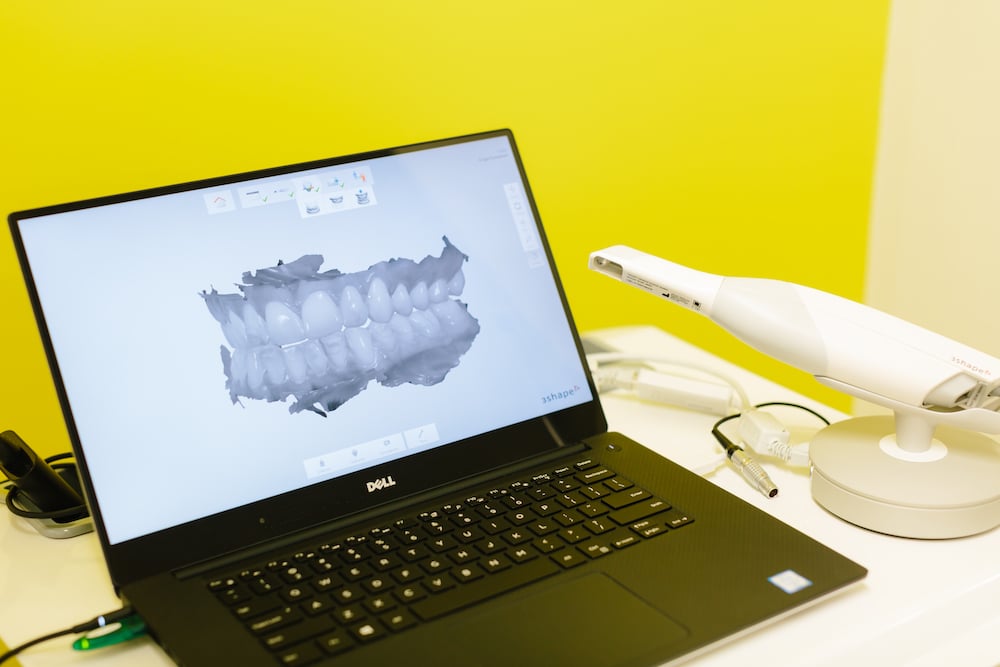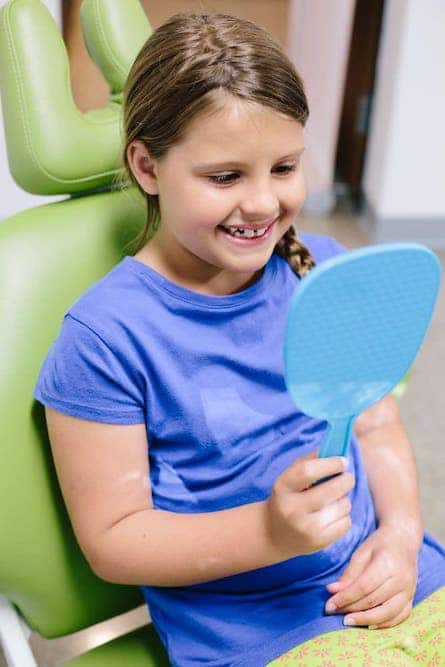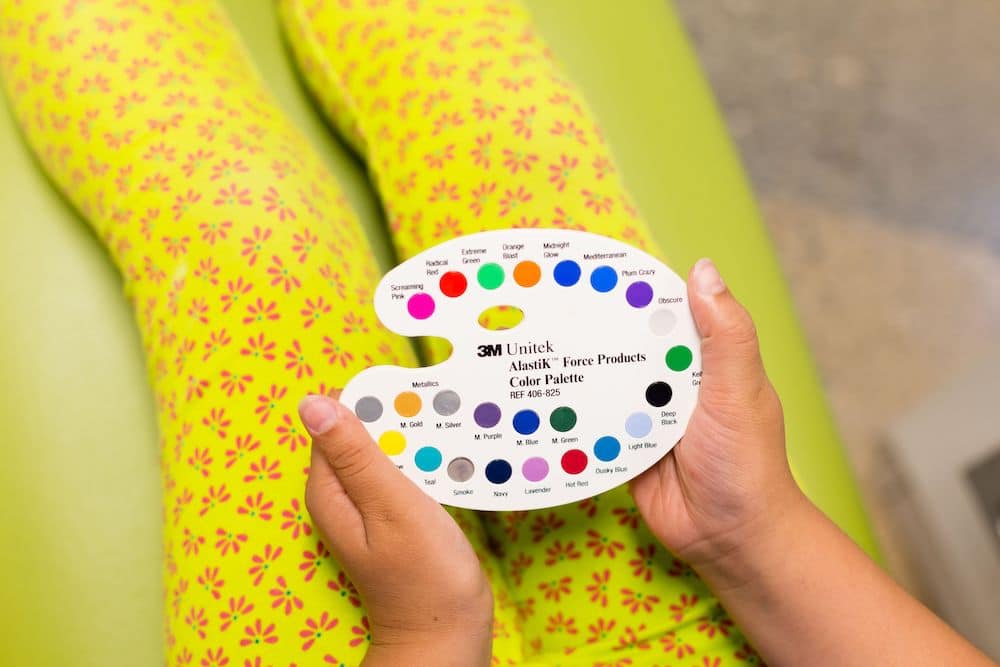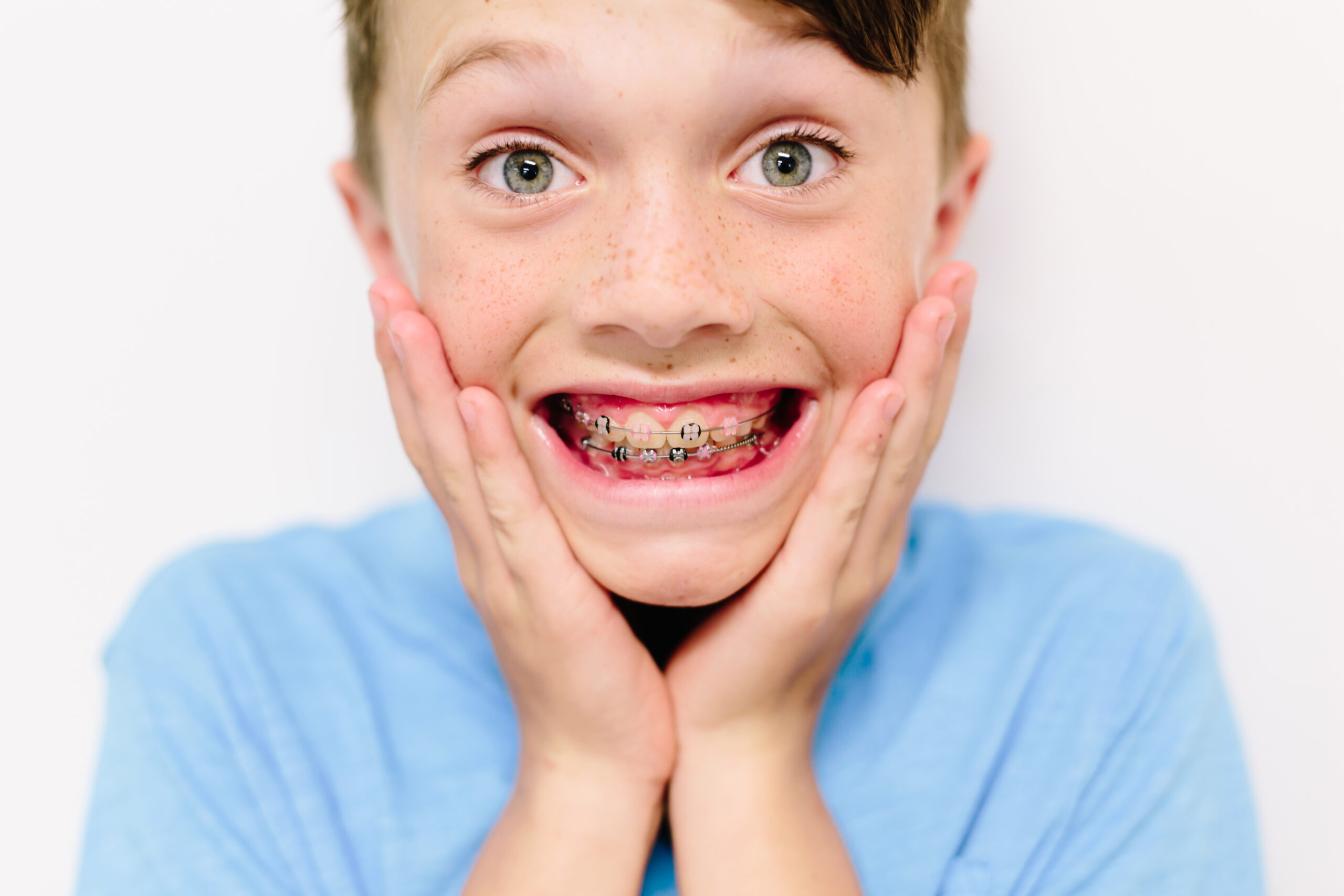Your Kid’s Braces Experience Will Be Very Different From Yours
Is this your first orthodontic rodeo? Did your dentist recommend your kid get an orthodontic consultation and now you feel like a deer in headlights?
If the last time you had to think about braces was when you had your own set, and you celebrated with bubble gum and hard candy, please note: the goal is the same, but methods are pretty different.
Because I have several kids and have even received my own orthodontic treatment as an adult, our family has been seeing the orthodontist for about 15 years.
During that time, we’ve seen orthodontics change – mostly in technology…
And I am not finished; I have one more little guy who very much needs orthodontics, so I am gearing up to do all this. One. More. Time.

Make an Appointment for a Consultation Near Age 8
Dr. Knapp at Knapp Orthodontics (as well as the American Association of Orthodontics) recommends that every child, regardless of how their teeth look, have an orthodontic consultation between ages 6 and 10.
Do not wait until your child has an obvious problem with their teeth or until all their baby teeth have come out to see an orthodontist. An orthodontist can determine and possibly solve any issues before they become big problems later on.
A Consultation Can Keep Small Problems from Turning into Big Problems.
What Happens at an Orthodontic Consultation?
At the consultation, your orthodontist will take x-rays and a series of photos. They will also perform an oral evaluation. It is now standard to use digital x-ray machines, which use less than half the radiation of non-digital and give much better detail and more information than older machines.

Also, 3D oral scanning takes the place of impressions now. (Do you remember that horrible gooey mess that was used to make a model of your mouth, and you thought you were going to gag while it was in there, and you prayed it hadn’t molded permanently to your mouth? Yeah, that’s GONE!)
This new method makes a computer model of the mouth in less than five minutes.
After studying the information from the consultation, the orthodontist will present you with a treatment plan.
Dr. Knapp recommends families go to consultations with different orthodontists in order to understand their different options. He says it is important to educate yourself on the current orthodontic methods as well as the different styles of local orthodontists.
“Get different consultations, for sure,” advises Dr. Knapp. “I love it when someone comes in here and we are the second or third consult, because I know they are serious about their orthodontic treatment, and they’ve taken the time to look into it.”

Don’t Let the Thought of Expanding Your Child’s Jaw Freak You Out
Sometimes nothing needs to be done after the consultation, and it’s a matter of wiggling a couple of baby teeth out in order to let adult teeth move into place. However, an orthodontist may also recommend your child wear an expander.
Using an expander is sometimes referred to as “Phase 1” treatment. Dr. Knapp prefers to call it the “interceptive” phase as during this time, many potential problems can be intercepted and corrected. The term “Phase 1” implies that there will be a “Phase 2,” and that is not always the case.
My son needs an expander, and I should have gotten him one sooner. We’ve procrastinated, and now the time has come for this little guy to begin his treatment. He is pretty freaked out.
However, now that Dr. Knapp has thoroughly explained the process to me, I am a lot better equipped to help my little guy (with a tiny mouth and giant teeth) through this ordeal. It is not a scary thing.
The most common orthodontic appliance used during the interceptive phase is the rapid palatal expander. It literally creates more space in the mouth for the adult teeth to erupt. The rapid palatal expander corrects any crowding, as well as helps prevent the need for any teeth pulling or corrective surgery.
The expander is attached to the roof of the child’s mouth, and by turning a key, it daily widens the jaw in small increments. The device works rather quickly since a child’s upper jawbones are not yet fully fused and is only used for about a month.
At this time, depending on the treatment plan, the mouth is usually given time to grow before braces are added.

There Are So Many Options for Braces These Days
One thing I remember most about the first few days after I got my braces was how badly they scraped up the inside of my mouth. Nothing helped, not even that wax I was instructed to put on my brackets (I swallowed a lot of wax), and I had to wait until calluses were formed before the pain subsided.
Braces wearers today have it a lot better; metal braces now are smaller, smoother, and milled from a single piece of polished stainless steel.
Dr. Knapp also offers clear braces, making them practically unnoticeable. While many orthodontists charge the patient more for the clear braces, Dr. Knapp does not.
“I want people to have what they are going to have the most fun with. I just want people to have what they want,” he says.
Upper braces are put on first. Dr. Knapp says the reason for upper braces going on first is for comfort – suddenly having a full mouth of braces can be disconcerting. He also says that kids tend to bite the lower braces off while getting used to them. It is best to adjust slowly.
Bottom braces go on usually 2 to 3 months into the treatment, and, at the end, all the braces will come off at the same time.
There are Even New Options for Retainers
So, treatment will continue… forever … because your child will wear a retainer. Teeth shift constantly, so to hold the position that you’ve worked so hard for, the teeth will need to regularly be held in place.
“We think of the bone as this strong, stable object, but it is actually continuously regenerating. When the bone regenerates, that tooth is going to shift a little. We recommend for every patient, no matter how old they are, to have and use their retainer,” Dr. Knapp advises.
Most orthodontists now use clear retainers, which can easily be replaced if lost or destroyed because of the 3D technology from which it was created. Clear retainers offer 360 degrees of coverage as opposed to the “old-fashioned” metal bar retainer which allowed some shifting.
New Methods and Technology + Needs Met = Excellent Orthodontic Experience
Orthodontic experiences are not all equal. It is wise to visit different offices to see what is out there.
Having all the newest and best technology will not necessarily make for a great experience. If an orthodontist isn’t a good communicator or good at allaying fears, don’t spend the next two years with this person.
This is why Dr. Knapp suggests at least two consultations with different practices.
“I think people stay with us because we take the time to learn and address their needs, and they feel listened to when they are here.
“It’s great when they’ve seen another orthodontist and literally, they come in and they are like in battle mode. They are surprised by how well they are treated,” says Dr. Knapp.
“This can be fun!”
Michelle Smith
Grand Rapids Kids Writer
Michelle Smith lives in Lowell with her husband. She’s an avid homeschooling parent: three of her children are homeschooling graduates and the remaining three are still at home under her tutelage. Michelle also enjoys classical ballet and live theater, especially musicals, both being in the audience and working backstage.

